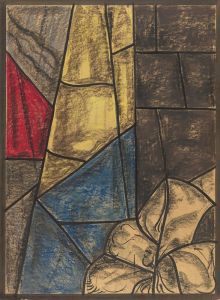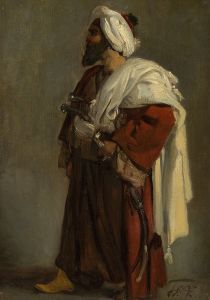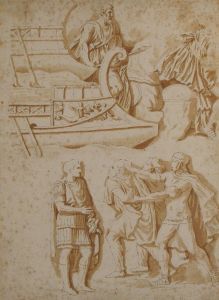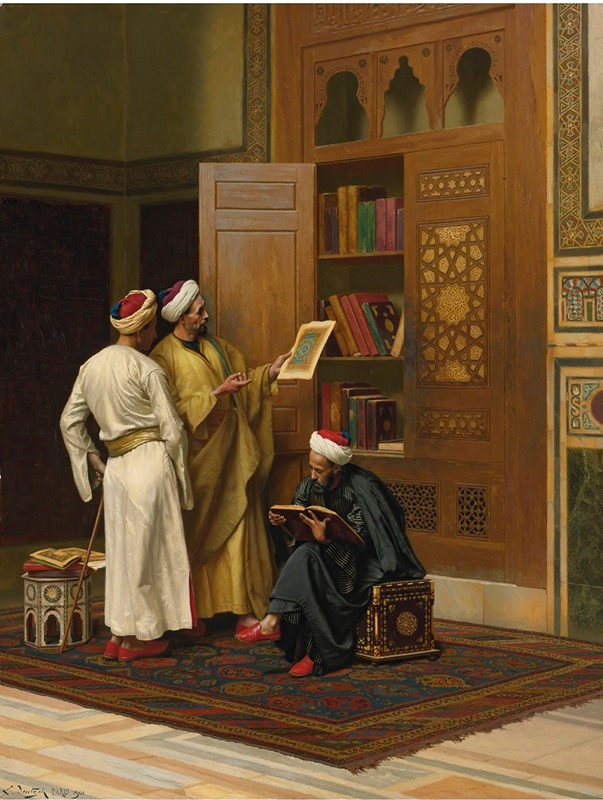
The Scholars
A hand-painted replica of Ludwig Deutsch’s masterpiece The Scholars, meticulously crafted by professional artists to capture the true essence of the original. Each piece is created with museum-quality canvas and rare mineral pigments, carefully painted by experienced artists with delicate brushstrokes and rich, layered colors to perfectly recreate the texture of the original artwork. Unlike machine-printed reproductions, this hand-painted version brings the painting to life, infused with the artist’s emotions and skill in every stroke. Whether for personal collection or home decoration, it instantly elevates the artistic atmosphere of any space.
Ludwig Deutsch was an Austrian painter known for his Orientalist works, and "The Scholars" is one of his notable paintings. Born in Vienna in 1855, Deutsch studied at the Academy of Fine Arts in Vienna before moving to Paris, where he became part of the Orientalist movement. This movement involved Western artists who depicted scenes from the Middle East, North Africa, and Asia, often romanticizing these regions through their art.
"The Scholars" is a fine example of Deutsch's meticulous attention to detail and his fascination with the culture and architecture of the Islamic world. Painted in the late 19th or early 20th century, the artwork captures a scene that reflects Deutsch's interest in the intellectual and cultural life of the Middle East. The painting typically portrays a group of scholars engaged in study or discussion, set against a richly detailed backdrop that showcases Islamic architecture and decorative arts.
Deutsch was known for his ability to render textures and intricate patterns with great precision, and "The Scholars" is no exception. The painting often features elements such as ornate tile work, carved wood, and textiles, all depicted with a high degree of realism. This attention to detail not only demonstrates Deutsch's technical skill but also reflects the influence of his travels and studies of Islamic art and architecture.
In creating "The Scholars," Deutsch likely drew inspiration from his visits to Egypt and other parts of the Middle East. These travels provided him with firsthand experience of the region's people, architecture, and customs, which he then translated into his paintings. His works are characterized by a sense of authenticity and respect for the subjects he depicted, although they also reflect the Orientalist tendency to romanticize and idealize the East.
Deutsch's paintings, including "The Scholars," were well-received during his lifetime, and he enjoyed considerable success as an artist. His works were exhibited in prestigious venues, and he was awarded several honors for his contributions to the art world. Today, Deutsch's paintings are held in private collections and museums, where they continue to be appreciated for their beauty and historical significance.
While "The Scholars" is a testament to Deutsch's skill and his engagement with Orientalist themes, it is also important to view such works within the context of their time. Orientalism as a movement has been critiqued for its portrayal of Eastern cultures through a Western lens, often perpetuating stereotypes and exoticizing the subjects. Nonetheless, Deutsch's work remains a valuable part of art history, offering insights into the 19th-century European fascination with the East and the artistic exchanges that resulted from this interest.
In summary, "The Scholars" by Ludwig Deutsch is a significant work that exemplifies the artist's mastery of detail and his engagement with Orientalist themes. Through his depiction of scholars in a richly detailed setting, Deutsch captures a moment of intellectual and cultural life in the Middle East, reflecting both his artistic skill and the broader context of Orientalism in art.





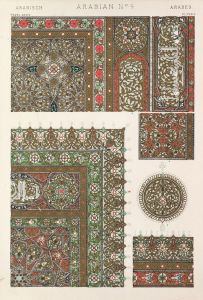
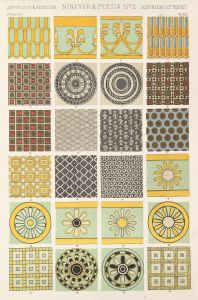
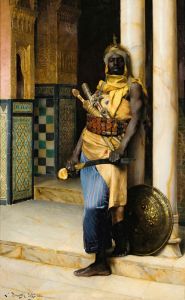


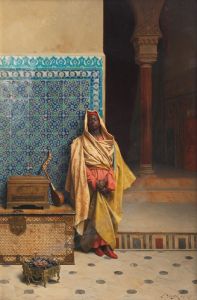
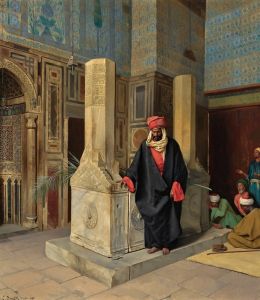
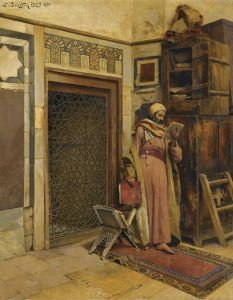

![Tombs of the Khalifs [Caliphs], Cairo.](/imgs/217567/s/david-roberts-tombs-of-the-khalifs-caliphs-cairo-375b2402.jpg)

